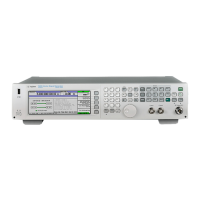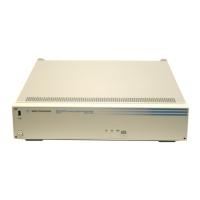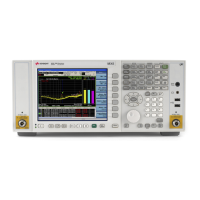82 Agilent N5181A/82A MXG Signal Generators User’s Guide
Basic Digital Operation (Option 651/652/654)
Using Waveform Markers
Using Waveform Markers
The signal generator provides four waveform markers to mark specific points on a waveform segment.
When the signal generator encounters an enabled marker, an auxiliary signal is routed to a rear
panel event output that corresponds to the marker number.
• Event 1 is available at both the EVENT 1 BNC connector (see page 12), and a pin on the
AUXILIARY I/O connector (see page 13).
• Events 2 through 4 are available at pins on the AUXILIARY I/O connector (see page 13).
You can use an auxiliary output signal to synchronize another instrument with the waveform, or as a
trigger signal to start a measurement at a given point on a waveform.
You can also configure markers to initiate ALC hold or RF Blanking (which includes ALC hold). Refer
to “Using Waveform Markers” on page 82 for details.
When you download a waveform file that does not have a marker file associated with it, the signal
generator creates a marker file without any marker points. Factory- supplied segments have a marker
point on the first sample for all four markers.
The following procedures demonstrate how to use markers while working in the dual ARB player.
These procedures also discuss two types of points: a marker point and a sample point. A marker
point is a point at which a given marker is set on a waveform; you can set one or more marker
points for each marker. A sample point is one of the many points that compose a waveform.
There are three basic steps to using waveform markers:
“Clearing Marker Points from a Waveform Segment” on page 88
“Setting Marker Points in a Waveform Segment” on page 89
“Controlling Markers in a Waveform Sequence” on page 95
This section also provides the following information:
• “Waveform Marker Concepts” on page 83
• “Accessing Marker Utilities” on page 87
• “Viewing Waveform Segment Markers” on page 88
• “Viewing a Marker Pulse” on page 92
• “Using the RF Blanking Marker Function” on page 93
• “Setting Marker Polarity” on page 94

